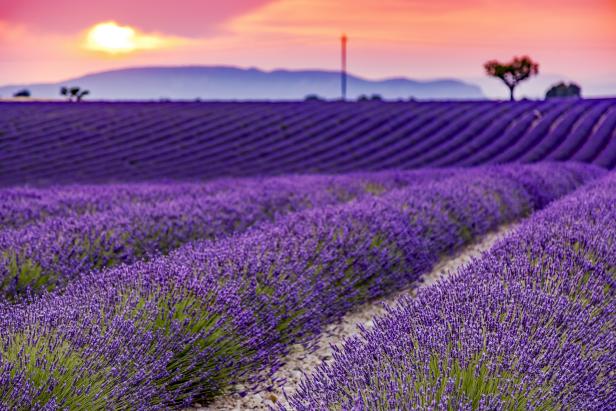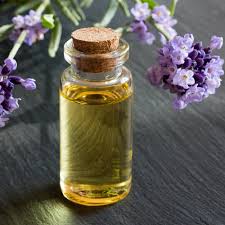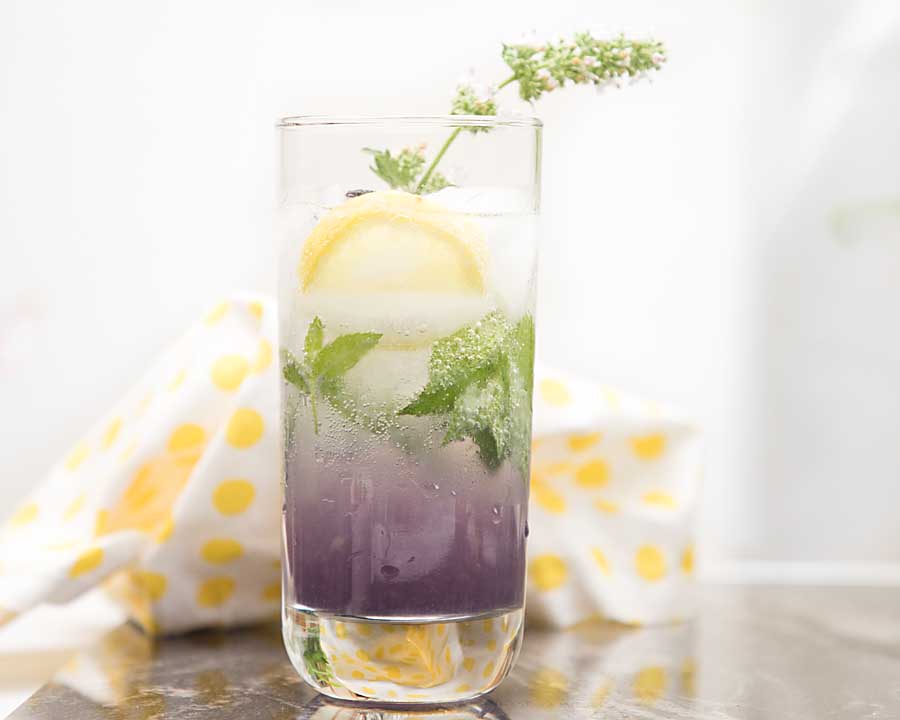Lavender (Lavendula) is an abundantly flowering plant with a lingering fragrance. The Latin name “lavendula” means "bathing" and was given to the plant by the ancient Greeks and Romans, who centuries ago appreciated the properties of essential oils inside lavender flowers. Aromatic herbs have long been used in herbal medicine and cosmetology.
The plant comes from the Mediterranean region and is grown in many European countries.  Lavender flowers contain about 3% of essential oil; the main ingredients of which are esters, e.g., pleasant-smelling linalool acetate and terpenes, e.g., geraniol, borneol and cineole.
Lavender flowers contain about 3% of essential oil; the main ingredients of which are esters, e.g., pleasant-smelling linalool acetate and terpenes, e.g., geraniol, borneol and cineole.
Lavender essential oil can be used in many different ways and purposes.
• In the form of compresses, it speeds up the process of healing wounds, burns and insect bites, as it has antiseptic and anti-inflammatory properties.
• Lavender oil can be used for bathing and will reduce tension and nervousness.
• When applied to the skin, the oil relieves pain and itching. It has a soothing antiseptic and disinfecting effect against pyogenic bacteria. Due to its high content of active substances, it also has a positive effect on the appearance of the skin, rejuvenating and smoothing.
 • The oil can be used when massaging the body. Perfect against cellulite, the oil causes the expansion of capillary blood vessels and thus facilitates blood circulation under the skin. Massaging with this oil helps prevent excessive accumulation of fluid in the body.
• The oil can be used when massaging the body. Perfect against cellulite, the oil causes the expansion of capillary blood vessels and thus facilitates blood circulation under the skin. Massaging with this oil helps prevent excessive accumulation of fluid in the body.
• Inhalations with lavender oil will work against such ailments as rhinitis or laryngitis.
• Medicinal lavender has an analgesic effect and is therefore recommended for people struggling with headaches and migraines.
• This plant also has an antispasmodic effect, hence its use to help with digestive problems.
• Lavender infusions have a warming effect; therefore, they will prove useful when fighting off a fever.
Finally... not many people know this but lavender can also be used in the kitchen!
Lavender flowers can be added to herb blends, but you can also prepare lavender vinegar or lavender oil. You can prepare both the same way:
Warm up the vinegar or the oil, add lavender flowers to it and let the mixture sit in a sunny place for two weeks inside a closed transparent container, such as a glass jar. You can leave the vinegar alone for these two weeks but the oil needs regular stirring.
Another lovely lavender recipe is this very tasty syrup. Throw two handfuls of dried lavender flowers into a container and pour in about 50cl of boiling water. Let sit for an hour. When the hour is up, add 1 tbs. of lemon juice and about 400g of sugar, then bring to a boil. Let then cool down, and the syrup is ready. You can add it to water to prepare a refreshing soft drink, or use it to make an alcoholic drink. If you want to keep it for a longer period of time, you can pasteurize it in the jar.
Last but not least, I will share with you the recipe for lavender gin (photo: artofnaturalliving.com):

5cl Gin
2cl Lavender syrup
3cl lime juice
Pour everything into a shaker with a few ice cubes, shake and pour into the chilled glass.
Enjoy!

